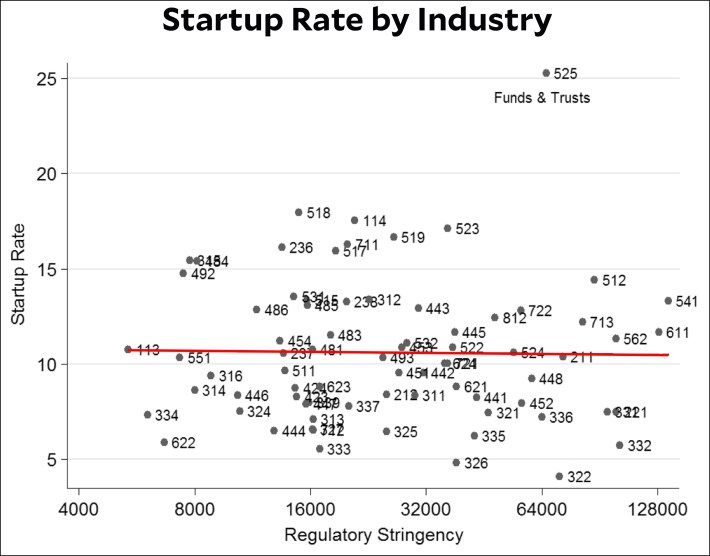
In a new paper, Alex Tabarrok and Nathan Goldschlag investigate whether heavyhanded government regulation has been responsible for a decline in dynamism in the American economy. They define dynamism about the way you’d expect: fewer startups, less job creation, aging firms, and weak productivity growth. Their approach is pretty simple: different sectors of the economy are regulated at different levels, so if regulation is at fault you’d expect to see a correlation between, say, regulation level and startup activity. But you don’t:

One paper doesn’t settle anything, of course, but this is basically an admission against interest since I doubt that Tabarrok wanted to come up with this answer. But he did. And as he notes, the paper got published in a good journal even though it’s a negative result. That’s good! Negative results should get published more often.
Needless to say, this doesn’t imply that regulation is good. It just says that regulation doesn’t seem to be responsible for reduced entrepreneurial activity or weak productivity growth. The answer lies somewhere else.















